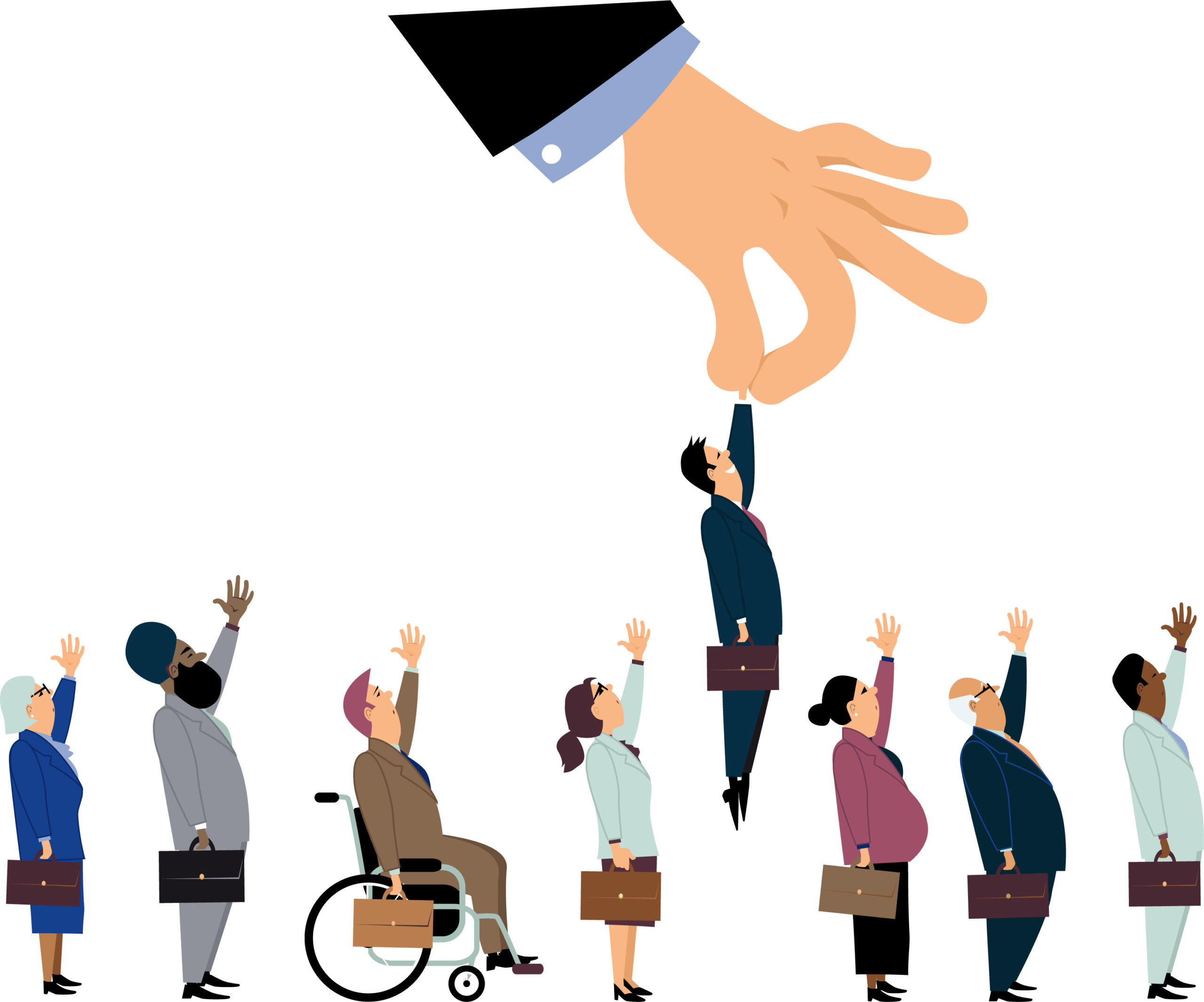The injured party in a personal injury lawsuit may receive compensation for their physical and psychological pain. This compensation is also referred to as pain and suffering damages. These damages are considered general or ‘non-economic’ because they pay for something that does not have a tangible financial value. That value is up to the discretion of the court after they assess evidence of that suffering provided by the plaintiff. While these numbers are determined on a case-by-case basis, courts will often use calculations such as the multiplier method and the per diem method to make a fair decision. While pain and suffering compensation is generally not taxable, it may be up for taxation if the injury was purely related to emotional suffering and not physical pain.
What is Pain and Suffering?
Pain and suffering are generally categorized as physical or mental.
Physical pain is defined as being caused by a physical injury. This can include not only the pain already suffered, but the probable future pain that will be caused by the injuries.
Mental pain is defined as the emotional and psychological damage caused by trauma or physical injury. This can include humiliation, fear, anxiety, anger, anxiety, shock, emotional distress, mental anguish, or even loss of enjoyment or quality of life. Significant occurrences of mental pain and suffering can also include depression, loss of appetite, sexual disfunction, loss of energy, mood swings, insomnia, and PTSD. When considering pain and suffering compensation, courts consider not only past and current conditions, but also any suffering that the plaintiff will suffer in the future because of the incident.
Is Emotional Distress Included in Pain and Suffering?
Emotional distress is a part of mental pain and suffering. There are many conditions that fall under the umbrella of emotional distress such as:
- Anxiety
- Crying
- Depression
- Fear
- Humiliation
- Insomnia
- PTSD
Emotional distress is considered bad enough that a person can recover damages even if there is no physical injury from the incident. However, due to the intangible and subjective nature of mental pain and suffering, it is best to have a mental health professional assess and substantiate the claims.
What Does the Law Say About Pain and Suffering in California?
Pain and suffering are considered a type of non-economic damages which can be awarded damages in a personal injury claim. This means that a person can be compensated for:
- Disfiguration
- Dismemberment
- Emotional distress
- Grief
- Loss of enjoyment of life
- Loss of quality of life
- Psychological trauma
- Scarring
- Shock
California law does not impose many rules and regulations regarding the amount of money a person can recover as compensation for pain, but there are some.
- In medical malpractice cases, a person cannot receive more than $250,000 in non-economic medical malpractice damages unless the injury was caused by reckless or intentional action.
- According to Civil Code 3333.4 there are some limits regarding recovering for non-economic damages in motor vehicle accidents.
- Drunk drivers are not permitted to recover non-economic damages.
- Uninsured drivers are not permitted to recover non-economic damages.
- Uninsured car owners can only recover non-economic damages for accidents caused by drunk drivers.
- According to Civil Code 3333.3 a person is also not permitted to recover any damages for injuries -obtained in the commission of a felony.
- As of 2022, wrongful death or survival actions may allow recovery for the pain and suffering of the decedent.
Personal Injury Accidents That Can Lead to Pain and Suffering Damages
There are many types of personal injury accidents that can lead to pain and suffering damages.
- Car Accidents – Every day, careful drivers are involved in accidents caused by someone else’s negligence, whether it’s driving while intoxicated or distracted, or just reckless driving like speeding and ignoring signs. The severity of car accidents can vary, causing minor injury such as bruising and shock, or major injury such as permanent disability and PTSD. Both physical and mental suffering can interfere with a person’s ability to live their life as they did before the accident.
- Pedestrian Accidents – It is not only other drivers who need to be wary of negligent driving. Cross walks and parking lots can be hazardous and sometimes, a pedestrian may be hit. When a pedestrian is struck by a vehicle it can cause serious injury leading to loss of mobility, trouble sleeping, emotional distress, and in many cases death. A pedestrian accident claim may be filed by a victim seeking compensation.
- Medical Malpractice – Sometimes the people who have sworn an oath to “do no harm” can do the most harm of all. When healthcare providers make mistakes, it is the patients who suffer, not just physically but psychologically as well. We put an insurmountable trust in our doctors, and when that trust is broken, it can cause lasting damage. Medical professionals are held to a higher standard of care and when they do not meet that standard, it is considered medical malpractice. Misdiagnosis, the wrong medications, and errors during procedures can not only worsen a person’s original issue but create new ones as well.
- Slip and Fall – When property is neglected and safety precautions are not taken by the property owner, people visiting the property can be seriously hurt. There is a myriad of situations that may lead to a slip and fall accident.
- Uneven or damaged floors with holes
- Stairs that are damaged, uneven, and have missing steps or railings
- Slippery floors or oily surfaces with no warning signs
- Tripping hazards such as poles, rocks, electrical cords, and torn or loose carpeting
Personal injury resulting from slip and fall incidents can range from humiliation to broken bones. To receive compensation for these injuries, a person must prove that the property owner was negligent in maintaining the property and/or warning you about it.
- Workplace Accidents – Some workplaces are inherently dangerous due to hazardous materials and machinery. Physical labor also comes with a risk of personal injury. Workplace injuries may be caused by:
- Handling dangerous chemicals without proper safety equipment
- Heavy lifting and overexertion
- Operating damaged machinery
- Tripping and slip fall hazards
- Explosions
Sometimes people make mistakes and injure themselves, but sometimes, it is the employer’s negligence that leads to an employee’s injury. If an employer is liable for an employee’s injury, that employee may file for a workers’ compensation claim.
An injury victim involved in these situations can face a lifetime of mental and physical pain. Some injuries may never heal right, causing chronic pain and disability. They may miss out on important events, causing more emotional distress. They may experience anxiety in future situations that remind them of their accident.
Types of Pain and Suffering
Physical pain is what most people think of when discussing personal injury, discomfort, and physical impairment that effect daily life. These may include:
- Coordination loss
- Disfigurement
- Mobility loss
- Sensory loss
Mental suffering or emotional distress are deep lingering feelings caused by an accident that can have a debilitating daily effect on a person. These may include:
- Anger
- Anxiety
- Apprehension
- Depression
- Fear
- Grief
- Shock
When someone suffers an indignity during an incident it can create strong feelings of shame and damage to their self-respect. These may include:
- Embarrassment
- Humiliation
- Mortification
- Nervousness
Pain and suffering can also come in the form of long-lasting damage to a person’s way of life. These may include:
- Damage to reputation
- Inconvenience
- Loss of companionship
- Loss of enjoyment of life
- Loss of quality of life
- Sexual dysfunction
How to Prove Pain and Suffering?
Economic damages have a monetary value attached that can be easily accounted for. Non-economic damages are a bit more vague and harder to pin down, but no less important when it comes to fair compensation. When putting together a personal injury claim, one should gather as much tangible evidence to help calculate pain and suffering. Written documentation is critical, so it is important to:
- Keep an account of all visits to medical and mental health professionals.
- Obtain copies of notes and medical opinions from doctors regarding their professional opinions and prognosis, as well as any other medical professionals involved in the situation.
- Keep a detailed list of all medications prescribed, specifying which must be taken long term.
- Document all severe or permanent conditions, chronic issues, and new disabilities.
- Keep a daily record of pain levels, challenges, and lifestyle changes.
- Obtain statements from loved ones of their perspective as well.
Damages Recovered When Seeking Recovery for Pain and Suffering
Economic damages are costs that have a visible and tangible financial value that can be accounted for and calculated into a definitive number. These are things such as:
- Ambulance & medical transport bills
- Disability accommodations
- Medical bills
- Medical equipment
- Lost wages
- Repair costs for property damage
- Physical rehabilitation
- Therapy bills
Non-economic damages, or special damages, are costs of a more personal nature that are harder to pin down and quantify. These are things such as:
- Disability
- Disfigurement
- Emotional distress
- Loss of companionship
- Loss of enjoyment of life
- Physical pain
- Sensory loss
- Reduced quality of life
How Are Pain and Suffering Damages Calculated?
Non-economic damages are calculated on a case-by-case basis to the discretion of the court. In a personal injury case, there is no fixed standard that determines the amount paid out for pain and suffering. A plaintiff presents their evidence for their claim and a judge or jury will determine a reasonable amount for the defendant to pay to recover damages. While pain and suffering are often subjective, they need to be proven with concrete evidence such as:
- Employment records
- Medical imaging & x-rays
- Photos and videos of property damage and injury
- Medical records & bills showing the extent of treatment received
- Doctor & therapists notes
- Witness testimony
- Testimony of friends, family, and colleagues
- Expert testimony
- Work/payroll records
There are no real limitations to calculating pain and suffering damages outside of state law-imposed caps and the boundaries of reasonable common sense. There are many variables involved including:
- The fault of the defendant
- The egregiousness of negligence that caused the accident
- The nature of the injuries
- The impact those injuries had on the plaintiff
- The impact on victim’s employment
- The plaintiff’s quality of life
- The permanence of the plaintiff’s condition
- Future needs and limitations
Some of these variables do have tangible financial values attached to them, and so there are ways to calculate pain and suffering that take those numbers into account as a starting point. These factors are considered, and a multiplier is used to determine the personal injury payout.
What is a Pain and Suffering Multiplier?
The multiplier method is one way that the court, insurance company, and personal injury lawyers use to calculate pain and suffering damages. The economic damages are calculated, and then that number is multiplied by a number between 1 and 5 in accordance with the severity of the injuries; with 1 used for the most minor cases and 5 for the most severe. A multiplier of 5 may be used in cases regarding:
- Extreme and/or chronic pain
- Loss of quality of life
- Permanent disability
- Prolonged loss of income
- Severe injuries
Per Diem Method Used to Calculate Pain and Suffering
The per diem method assigns a value to each day, usually taken from the plaintiff’s income prior to the accident. That number is then multiplied by the number of days between the date of the accident and the date they are considered fully healed or as healed as possible which is referred to as maximum medical improvement.
Therefore, if a person was earning $100 a day before an accident, and achieved maximum medical improvement a month later, the per diem method would multiply 100 by 30 and determine that they are entitled to $3,000 for pain and suffering.
Other Factors That Can Impact Pain and Suffering Damages
Convincing a jury takes more than just facts. Many things can impact a personal injury case such as:
- Quality of plaintiff testimony
- Plaintiff’s impression on the judge and jury
- Consistency of the testimony
- Credibility of the plaintiff
- Criminal record of the plaintiff
- Honesty of the plaintiff
- Jury’s understanding of the situation
- Substantiating testimony from medical professionals
It is important to be honest and consistent. If a jury does not like a plaintiff or thinks they are exaggerating, they are less likely to be sympathetic. If the jury does not understand the situation, they cannot make an appropriate decision.
Are Pain and Suffering Damages Taxable?
Under California state and federal law, both economic damages and non-economic damages received from a personal injury claim are generally not taxable. The one exception is when a person suffers mental or emotional harm with no physical injuries or illness. In those situations, the money received might be taxable.
Hiring a Personal Injury Lawyer if You Have Experienced Pain and Suffering
Accidents are a stressful experience, and even more so when they result in pain and suffering. Personal injury claims must be filed within two years, so it is important to speak to an attorney as soon as possible. It helps to have someone in your corner who understands the law and can help you receive fair compensation. Mesriani Law Group is dedicated and experienced in personal injury law. If you need compensation for pain and suffering, call Mesriani Law Group today for a free consultation.
Pain and Suffering FAQs
How much can you recover from pain and suffering?
The amount of money a person can receive for a pain and suffering settlement varies depending on the situation. Totals are often calculated by considering things like medical bills and lost wages.
What consists of pain and suffering?
Pain and suffering are non-economic damages. This means that a person can be compensated for the following:
• Disfiguration
• Dismemberment
• Emotional distress
• Grief
• Loss of enjoyment of life
• Loss of quality of life
• Psychological trauma
• Scarring
• Shock








